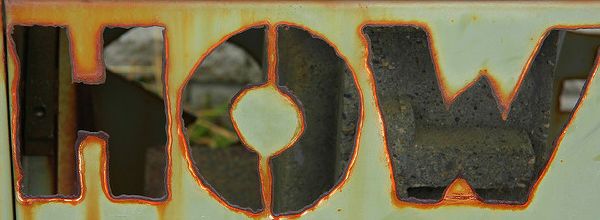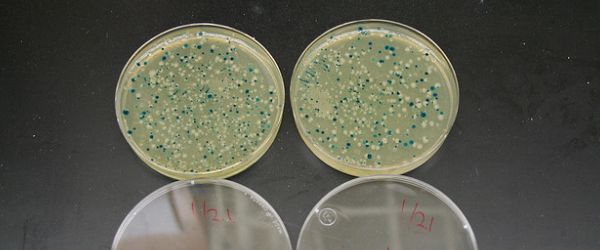One of the most crucial steps in any cloning procedure is the preparation of the vector. Get it wrong and your chances of success will be drastically reduced.
The overall aim for a good vector preparation is to obtain a fairly concentrated stock of undamaged, fully digested plasmid DNA that is free from contaminants. Missing any of these aims will affect the efficiency of the ligation and is the cause of many of the problems researchers have with cloning.
Here are my top tips for vector preparation:
1. Start With a Good Plasmid Stock
It may seem obvious, but starting with a poor-quality plasmid stock is asking for trouble. I find that plasmid DNA from midi or maxi-preps gives better results since it is generally higher quality and there is more of it, so there is no need to be frugal with the amount you use. After preparing the DNA, check its quality using both an agarose gel and a UV spec, if available. See my article on determining DNA purity and concentration for more details.
If the plasmid stock is poor (very low DNA concentration, contaminating RNA, gDNA, protein, salt, phenol, ethanol, etc), discard it and make a new one. Don’t be tempted to continue with the low-quality prep – you will likely regret it later.
2. Pay Attention to the Digest
The digest looks easy on paper, but don’t underestimate the importance of good planning and execution in this part of the procedure. Here are my general rules of thumb for digests:
- Use the highest practical reaction volume. The digest volume is restricted by the next intended step (e.g., the volume your agarose gel well can hold), but with a higher volume, impurities in the plasmid prep that could inhibit your reaction are diluted more.
- Always add BSA to the digest. Many restriction enzymes require it, and those that don’t are not affected by its presence. If you always add it, you can’t forget it when you need it.
- Limit the volume of restriction enzyme to a maximum of 10% of the total volume; otherwise, the glycerol and EDTA in the enzyme storage buffer could inhibit the reaction.
- Use a minimum of a 20-fold excess of enzyme (20 units of enzyme per microgram of plasmid DNA for a 1-hour incubation)
- Confirm that the digest has been successful. e.g., Run an undigested plasmid sample alongside the digest on a gel; the digested plasmid should have a different migration compared to the undigested circular plasmid. If you are using more than one restriction enzyme, perform single digests with each enzyme to confirm that both enzymes are cutting properly. Also, ensure that the digested vector runs as a single band. If more than one band is present, it means that the digest is not complete, and the uncut plasmid will give a very high background in the transformation later. Discard and repeat the digest. It may be necessary to re-prepare the vector as a contaminant in the vector prep could inhibit the digest.
3. Prevent Re-ligation
If the cut ends of the vector can efficiently re-ligate during the ligation step, you will obtain a high background in the ligation. This is mainly a problem in blunt-ended or non-directional cloning, and the solution is to dephosphorylate the vector using a phosphatase. The latest phosphatases (for example, Antarctic Phosphatase from NEB) are easily inactivated by heat, eliminating the problem of carry-over of the phosphatase into the ligation encountered with the commonly used calf intestinal alkaline phosphatase.
For directional cloning, the problem of re-ligation can be completely eliminated by choosing enzymes that generate incompatible ends e.g., where one enzyme generates a 5′ overhang and the other a 3′ overhang – there is no way for these ends to anneal.
4. Get a Good Separation
Even in a good digest, some plasmid will remain undigested and could cause a high background in the ligation. An agarose gel is normally used to separate these species, but getting the separation just right requires a bit of work. Aim to run the gel for as long as possible – not just until the dye front reaches the end, but until the digested vector band is at least 3/4 of the way down the gel.
If your digest is good, the undigested DNA should be invisible, but assume it is there – it probably is. Using the correct agarose concentration for your vector size will help by ensuring optimal separation of the two species. For example, I use 0.6% agarose for 4-6 kb vectors.
5. Don’t Fry the DNA
This tip is the most important of all. The most common method for visualizing the plasmid DNA is using ethidium bromide (or a safer alternative) and a UV transilluminator. It is common knowledge that UV light will damage the plasmid, and common practice is to attempt to minimize the damage by exposing the plasmid for the shortest possible time.
In my experience, the plasmid can sustain a massive amount of damage even with a very short exposure, drastically reducing cloning efficiency. Anecdotally, I have heard of people adding dATP to the gel to act as a “sunblock”, but I have never tried it, so I can’t vouch for its efficacy – if you have tried this, feel free to add a comment!
My preferred method is to use a dye such as crystal violet or methylene blue to visualize the preparative plasmid prep. These stains have a much weaker interaction with DNA, so only bands containing greater than 0.5 micrograms of DNA can be visualized. This makes things a bit tricky as the marker bands cannot be seen.
My approach is to run the marker and any controls alongside the preparative sample in a clean (dye-free) agarose gel, then cut the gel in half (from top to bottom) so that the markers and controls are in one half and the preparative sample is in the other.
I then strain the marker+controls half in TBE containing ethidium bromide and the preparative half in methylene blue. The markers+control can then be visualized on UV and compared with the preparative half to ensure that the preparative sample looks ok. I find that cloning efficiencies are at least 20 to 100-fold improved using this method, so the effort is well worth it.
Original article published on August 22, 2007. Updated and revised on April 29, 2016.







